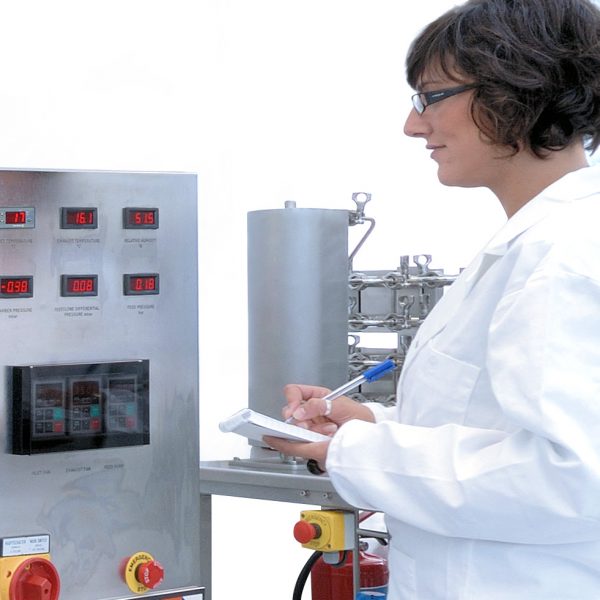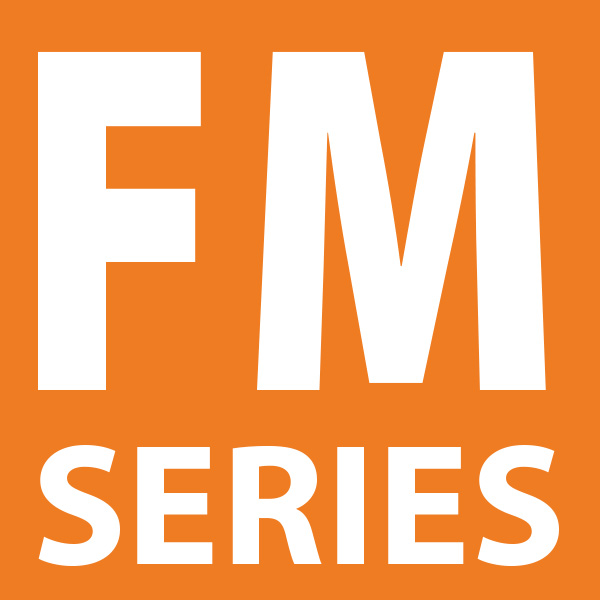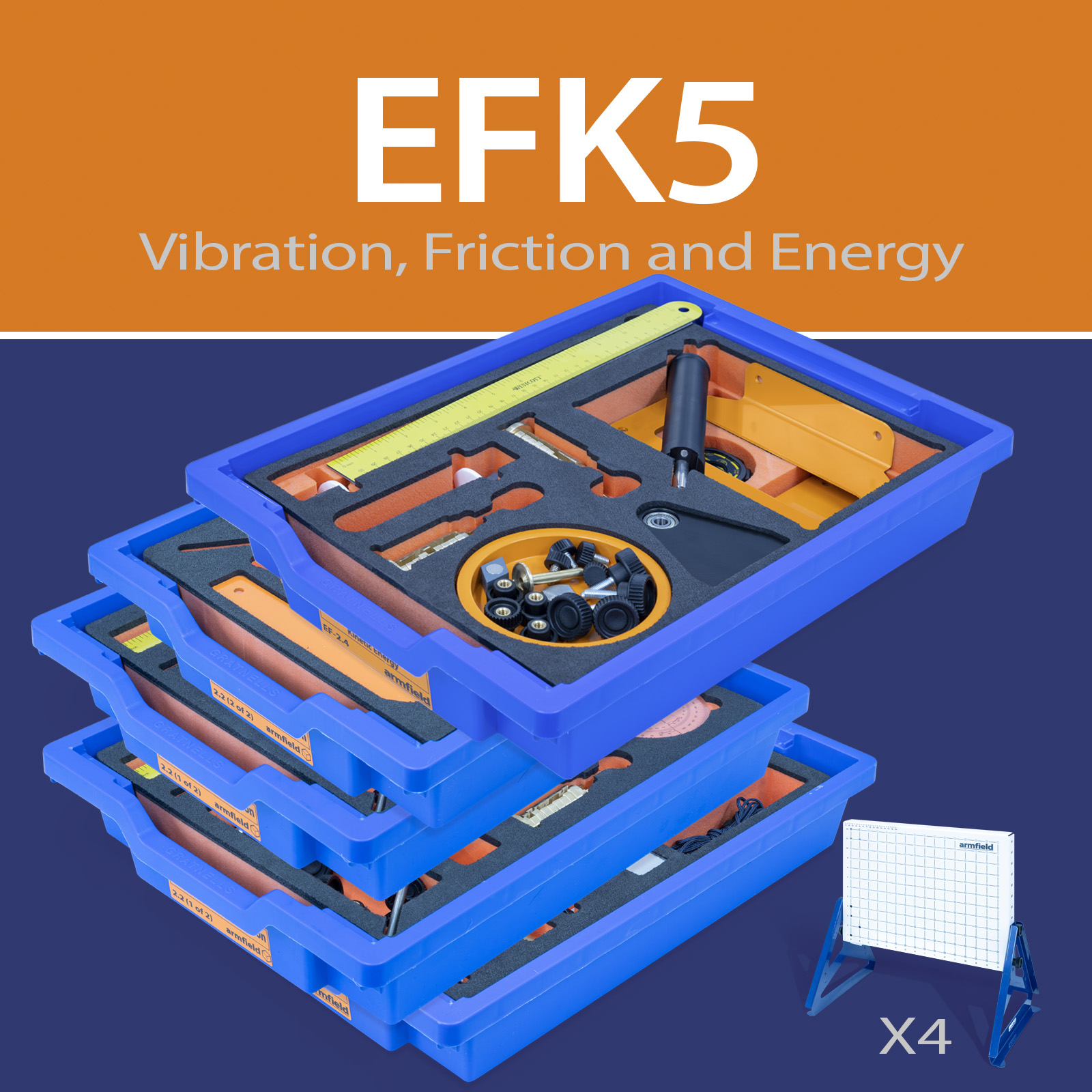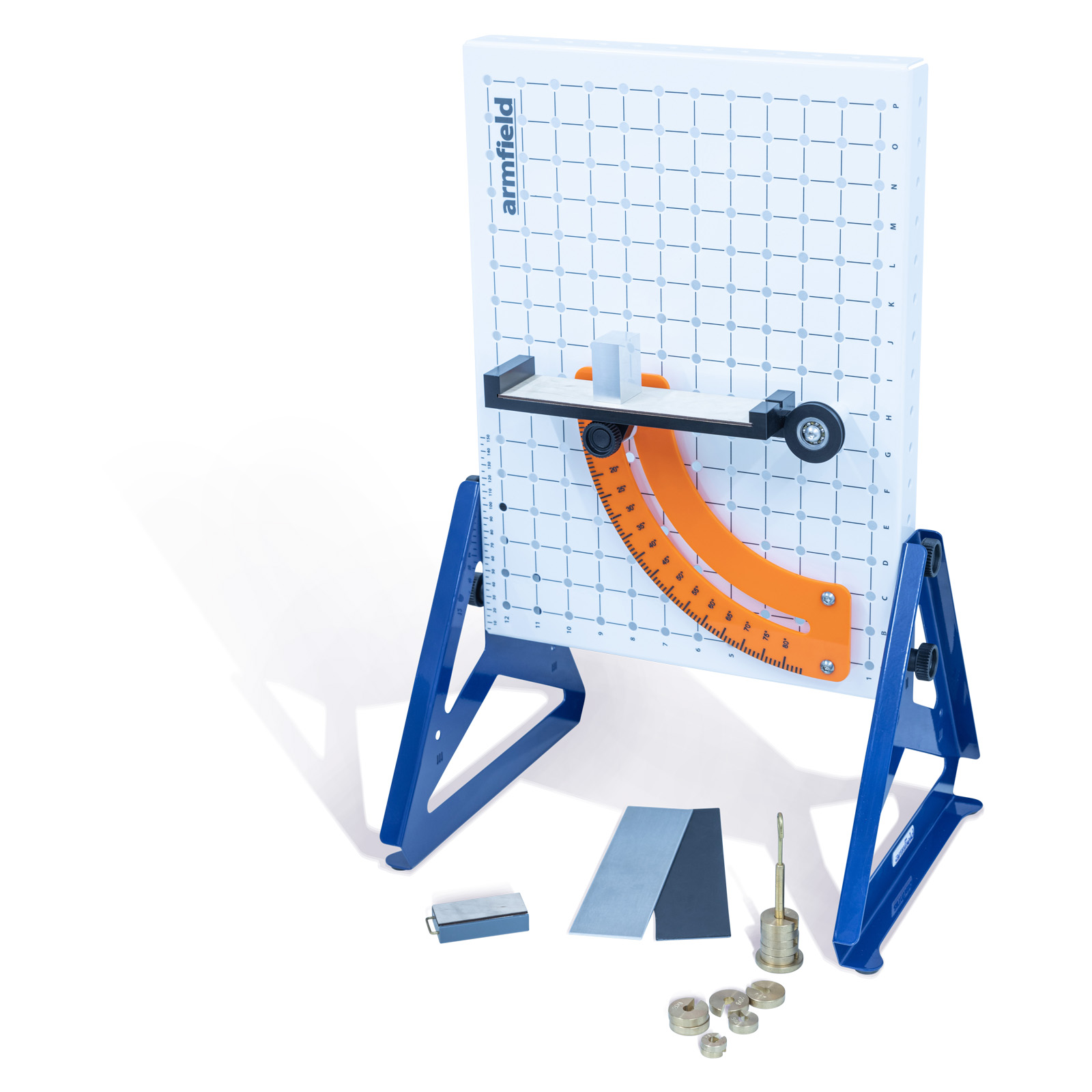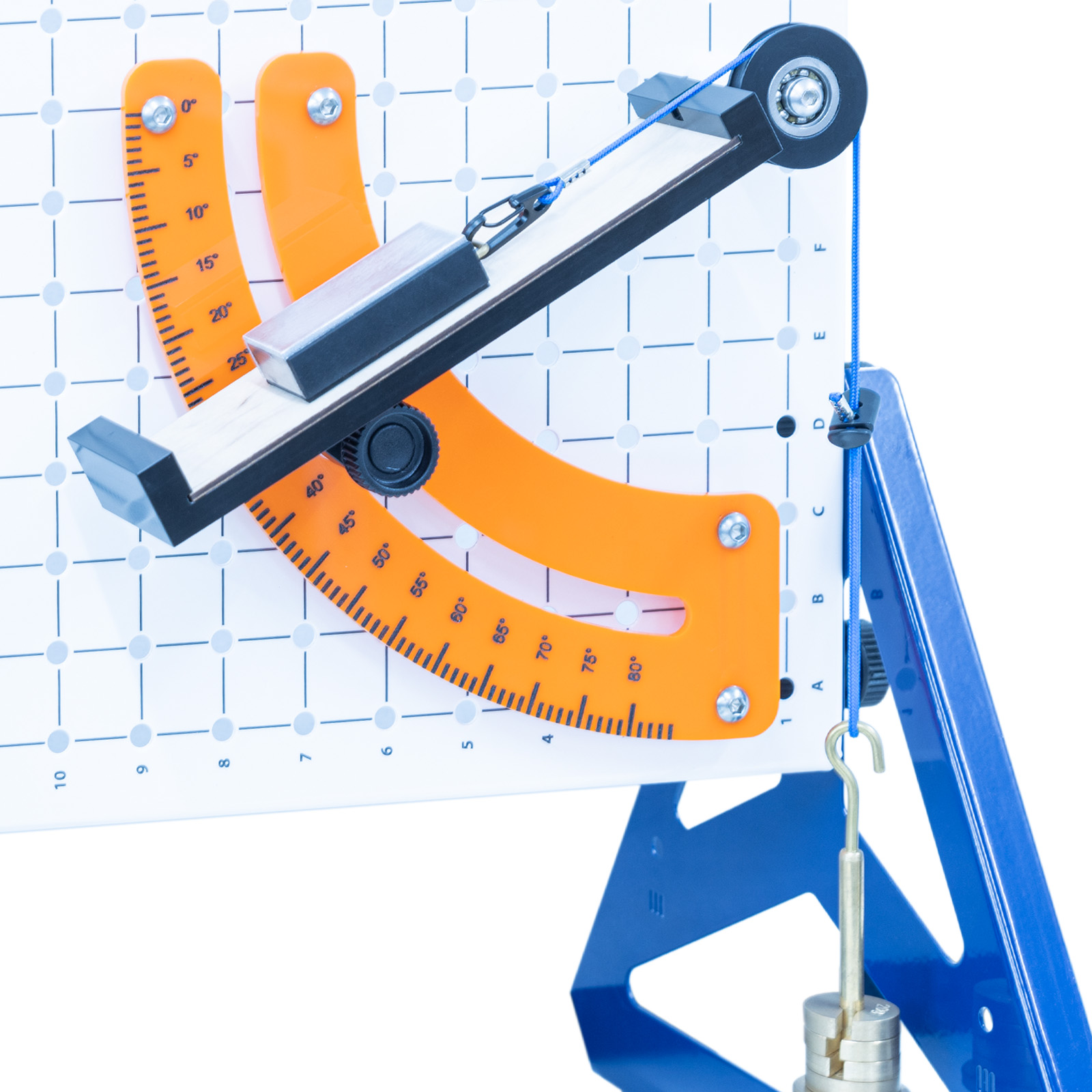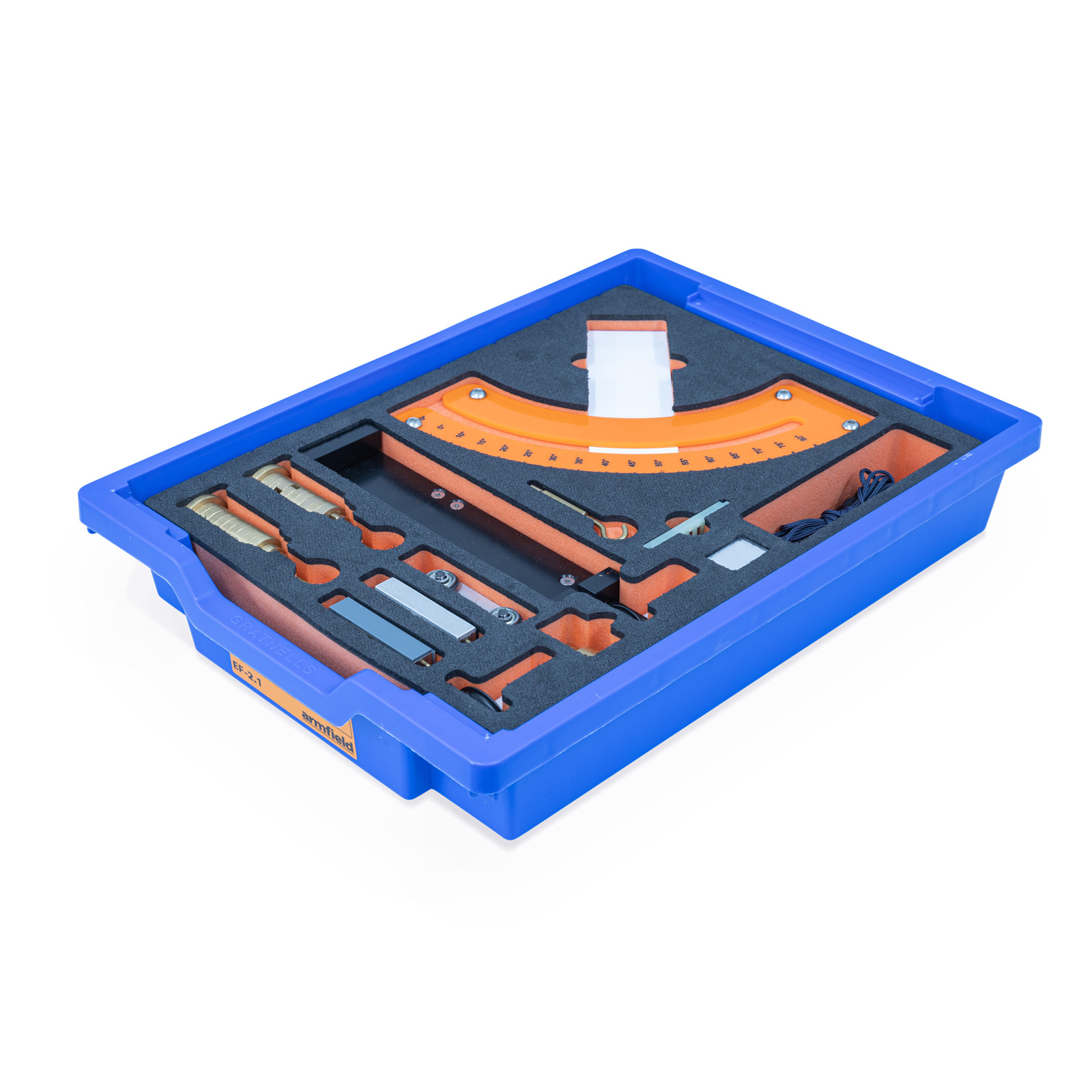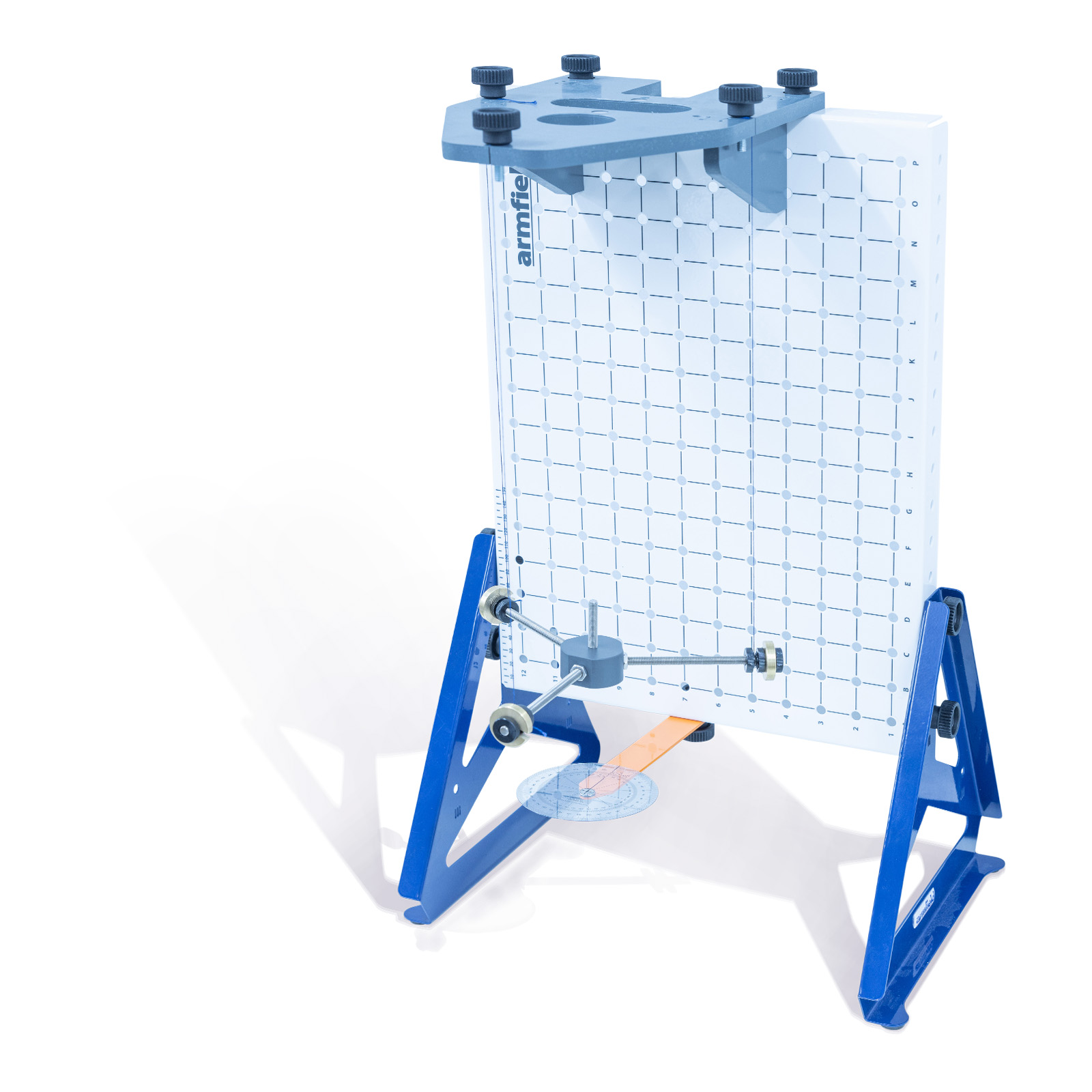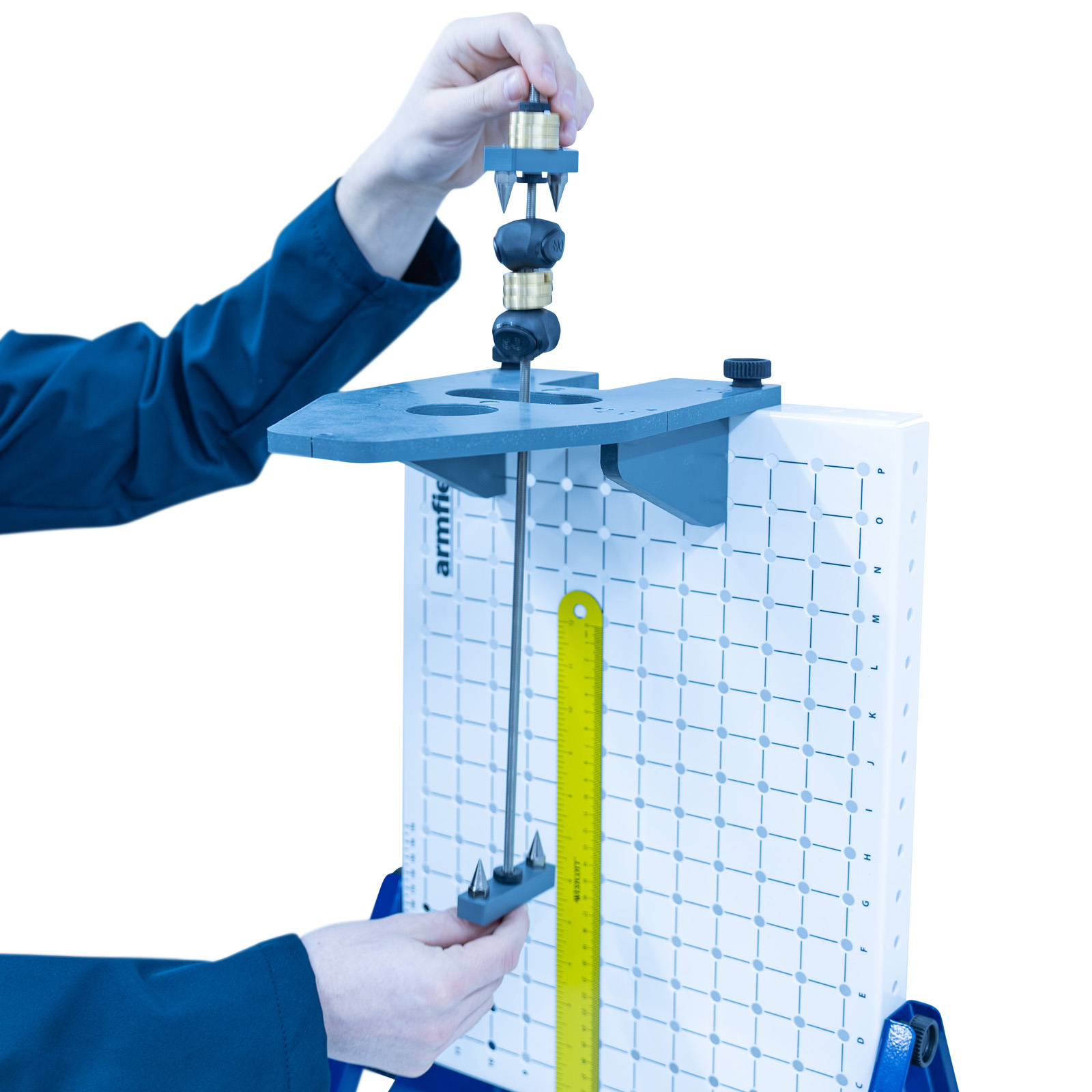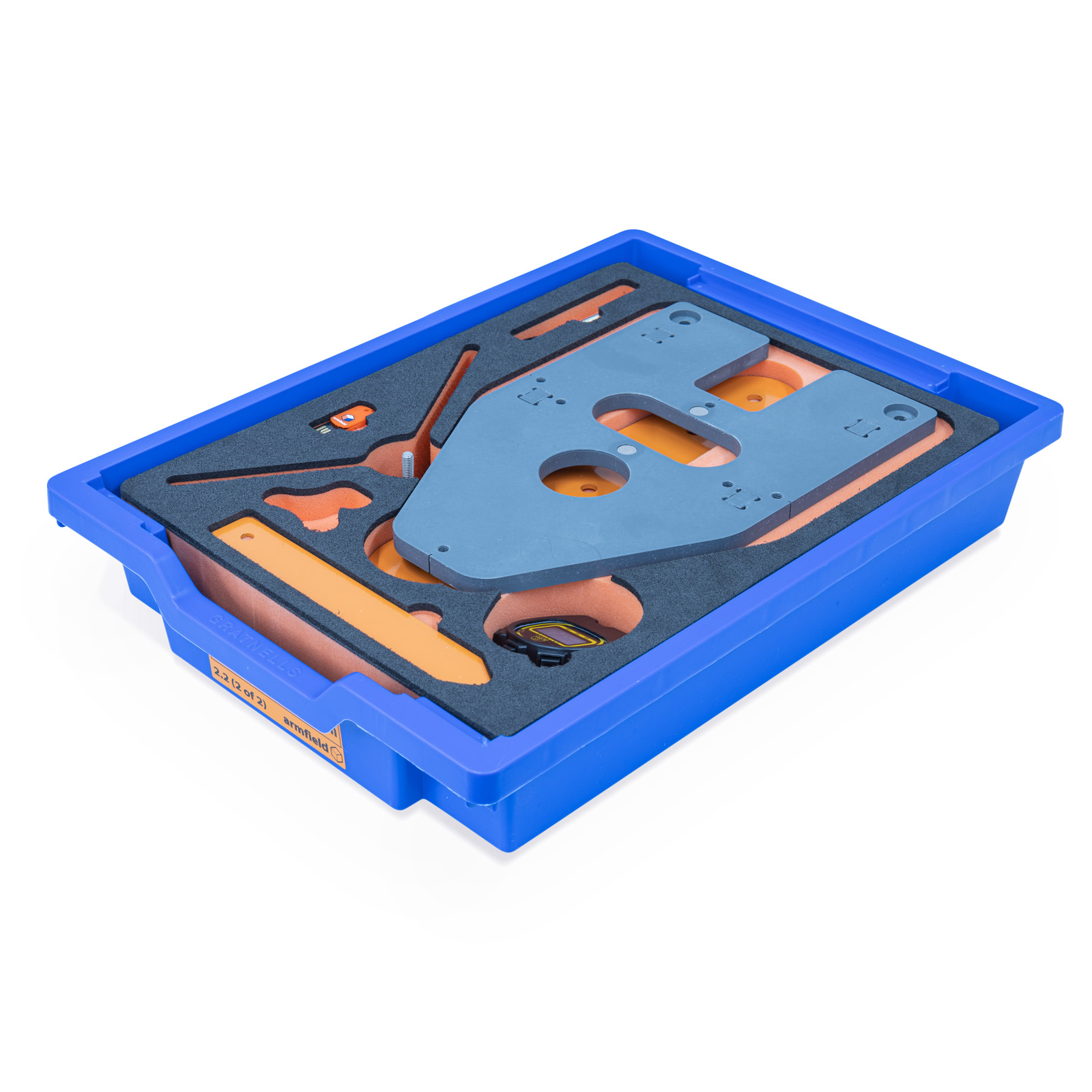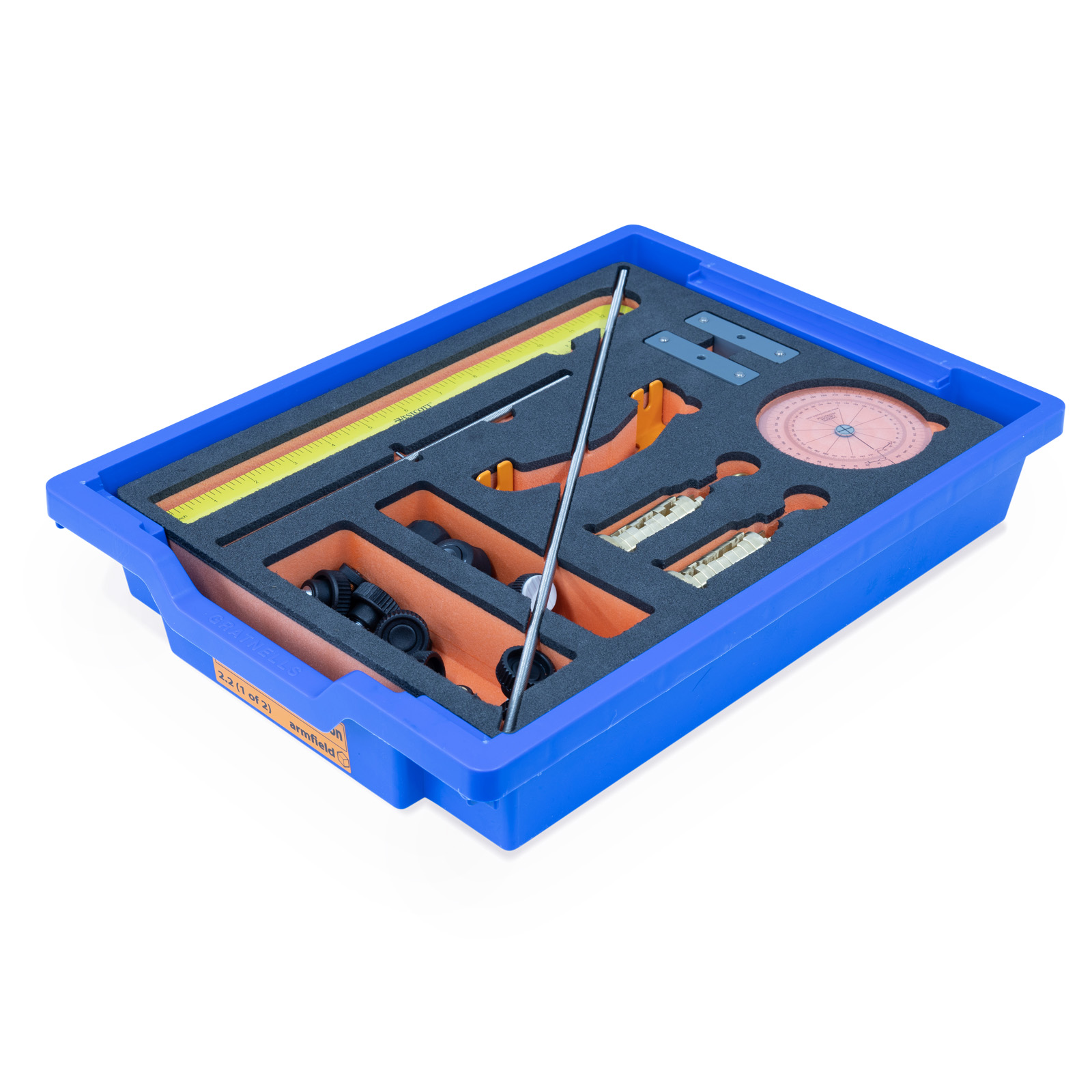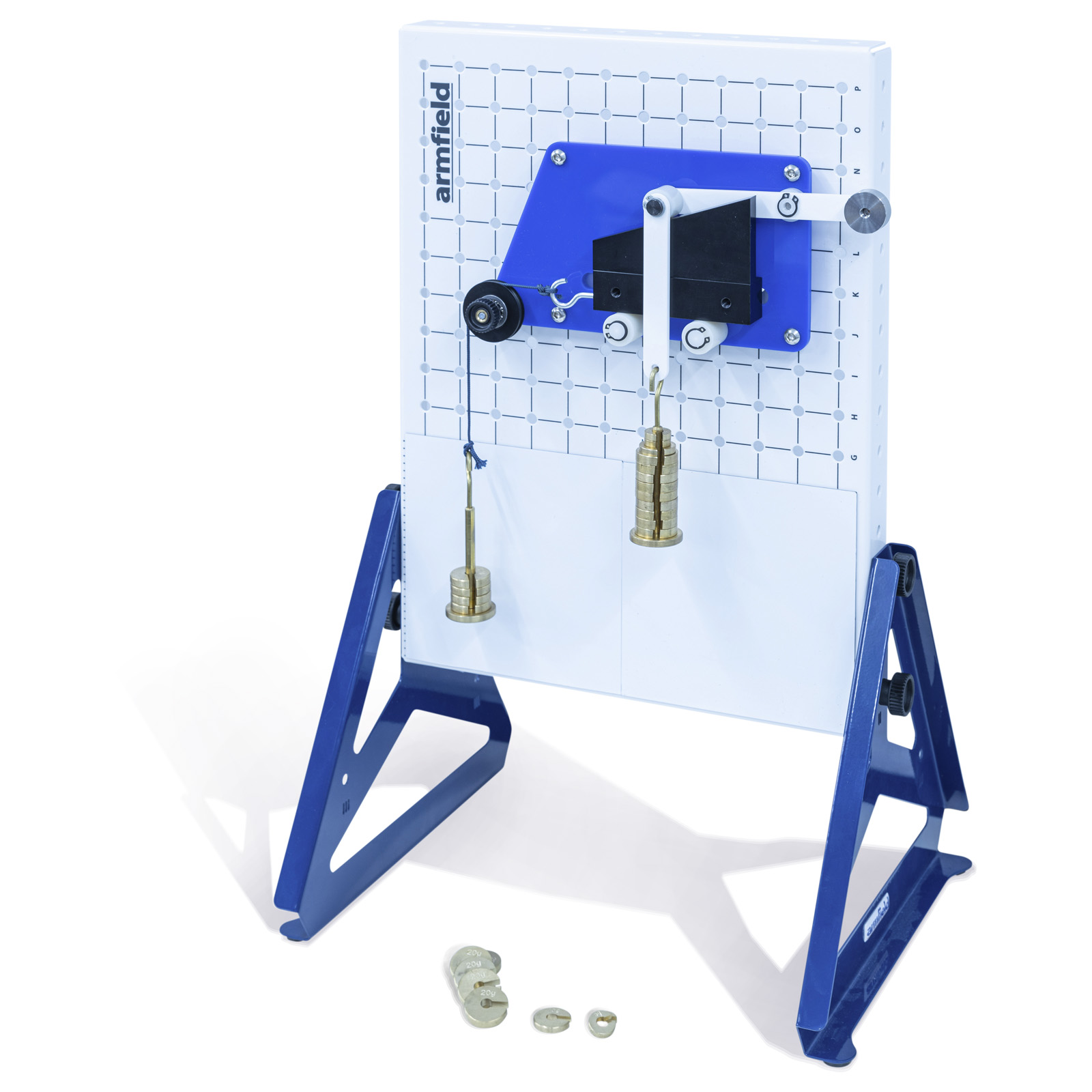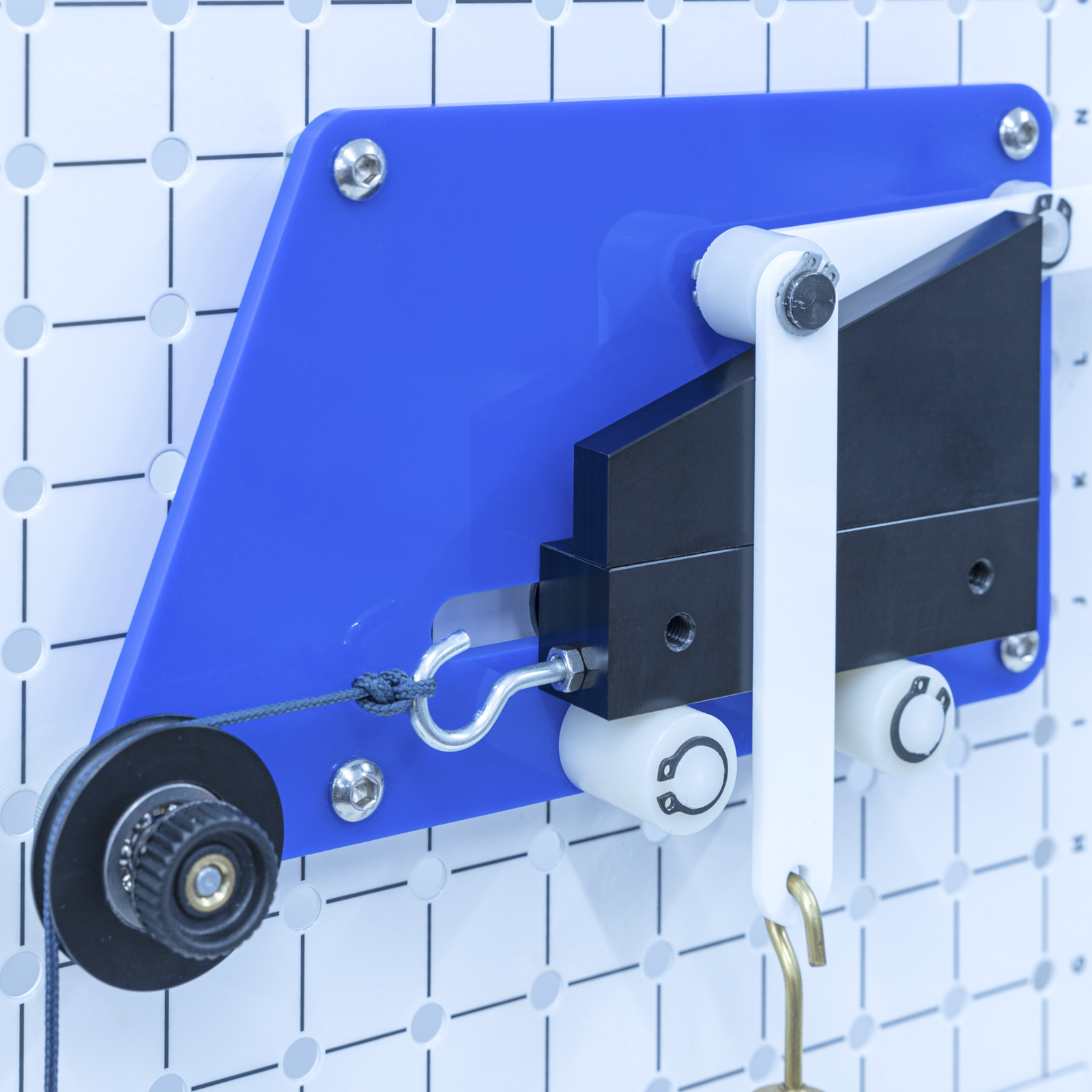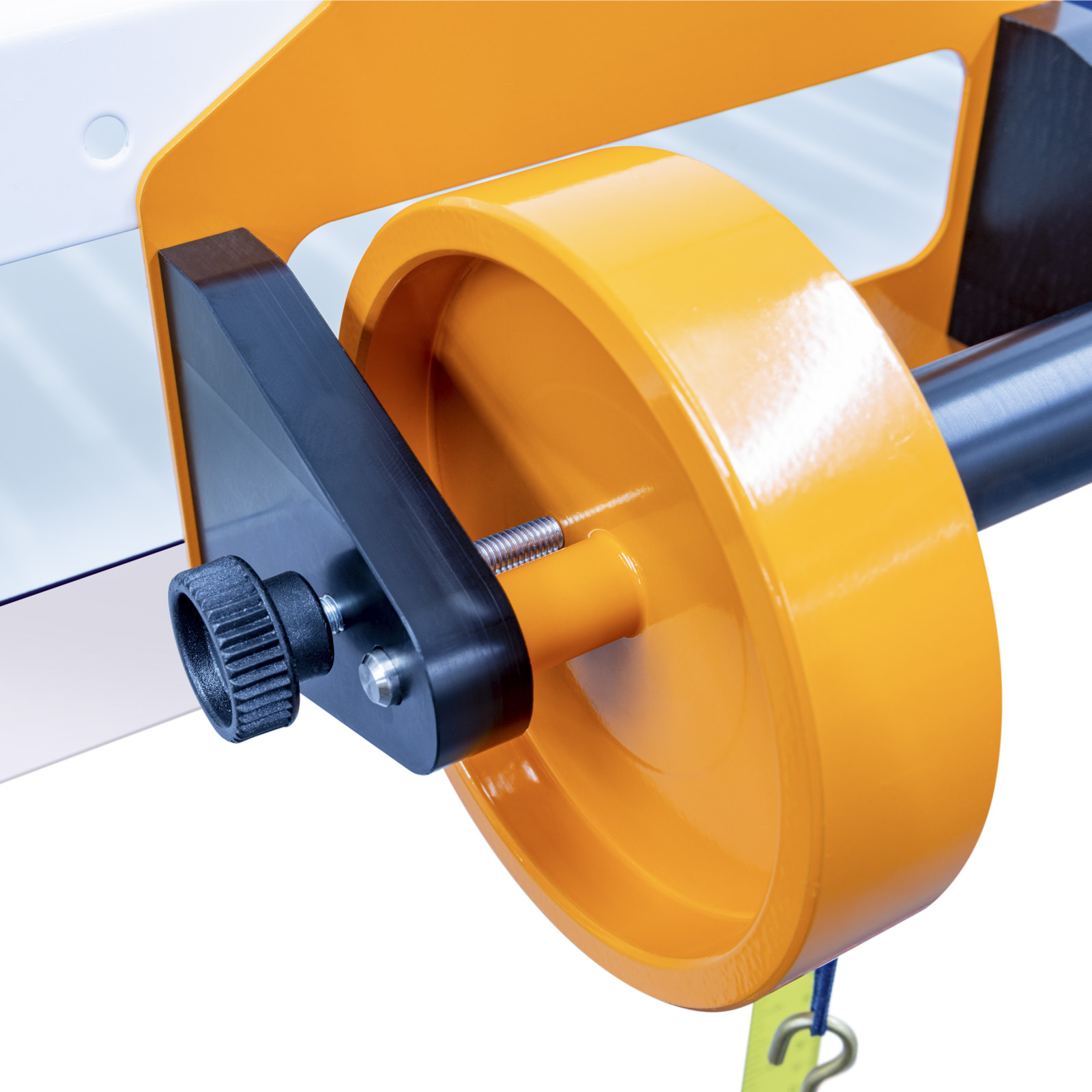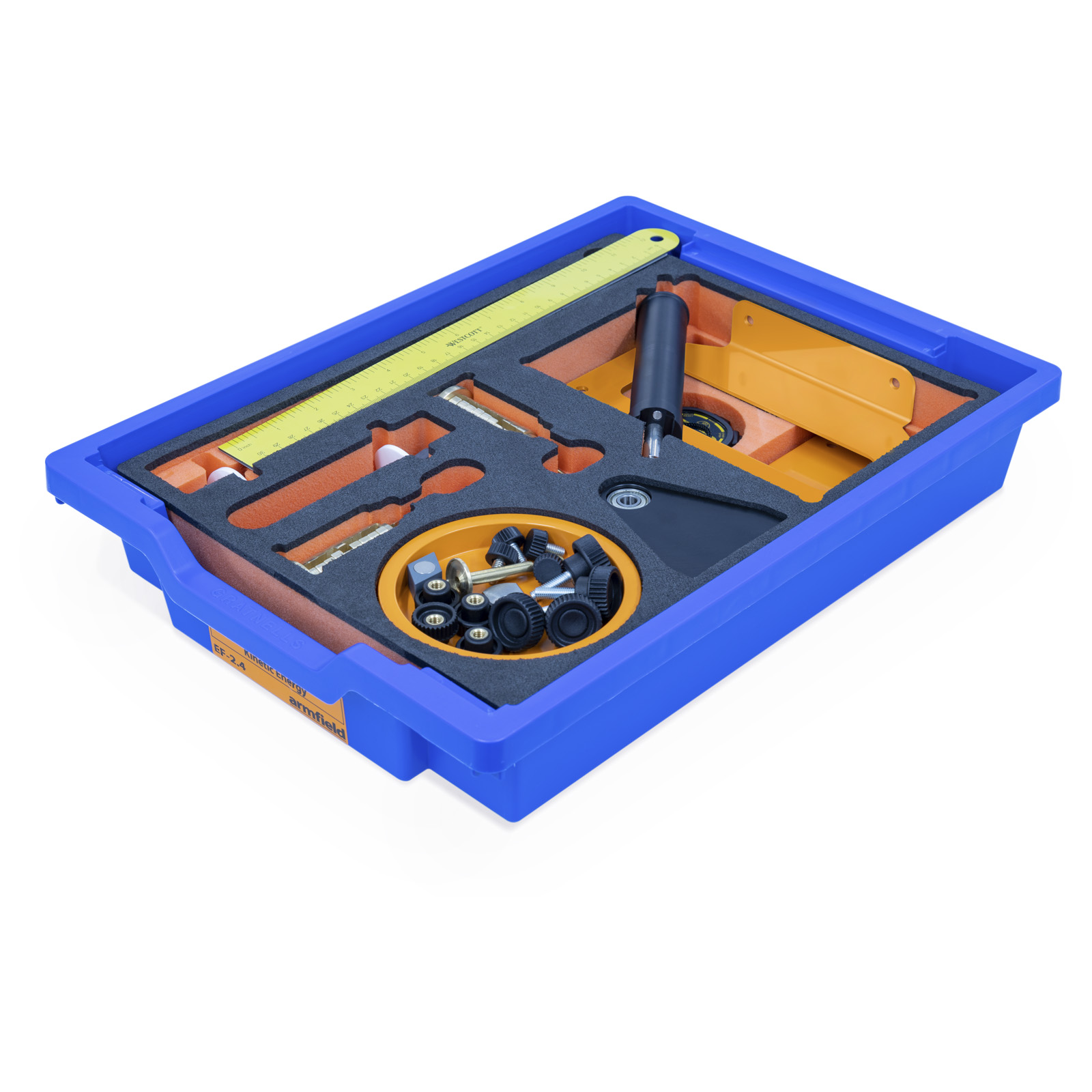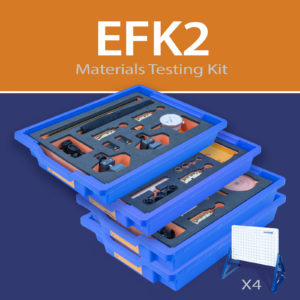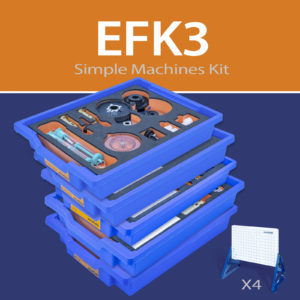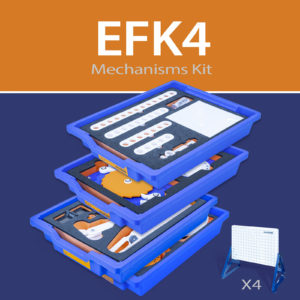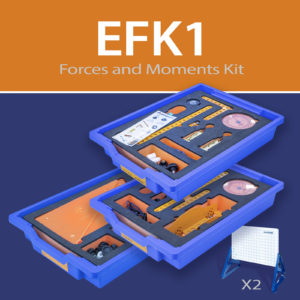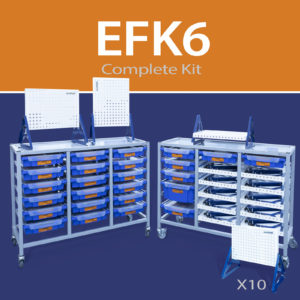EFK5 Vibration, Friction and Energy
Contains one of each of the Friction, Simple Harmonic Motion, Rotational Friction and Potential and Kinetic Energy Kits, plus four Base Units.
The Engineering Fundamentals range is designed to enable students to gain an understanding of the fundamentals of engineering by the process of learning via hands-on experimentation.
Bundled Learning For:
- STEM Education
- National Vocational Qualifications
- High Schools & Technical Colleges
- University Foundation Degrees
Description
The Engineering Fundamentals range is designed to enable students to gain an understanding of the fundamentals of engineering by the process of learning via hands-on experimentation.
The modular hands-on tray-based system is supplied in conjunction with a multifunctional Base Unit enabling the student to conduct their own experiments.
Bundled Learning For:
- STEM Education
- National Vocational Qualifications
- High Schools & Technical Colleges
- University Foundation Degrees
Contains one of each of the Friction, Simple Harmonic Motion, Rotational Friction and Potential and Kinetic Energy Kits, plus four Base Units.
Technical Specifications
Features & Benefits
EFK5 Vibration, Friction and Energy:
- EF-2.1 Friction (X1)
- EF-2.2 Simple Harmonic Motion (SHM) (X1)
- EF-2.3 Rotational Friction (X1)
- EF-2.4 Potential and Kinetic Energy (X1)
- EF-BU Base Unit (X4)
Contains one of each of the Friction, Simple Harmonic Motion, Rotational Friction and Potential and Kinetic Energy Kits, plus four Base Units.
Includes the following education content:
EF-2.1 Friction (Click to see more information)
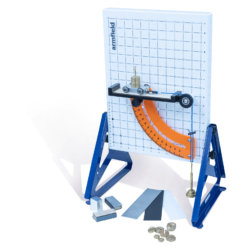
- Static and kinetic Friction
- Sliding and Rolling Friction
- Effect of Angle on Friction
- Component Forces
- Calculating the coefficient for both kinetic and static friction
EF-2.2 Simple Harmonic Motion (SHM) (Click to see more information)
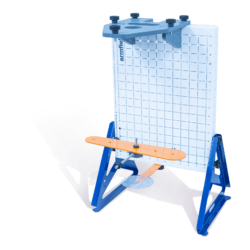
- Effect of length and mass on period of oscillation of a simple pendulum
- Effect of length and mass on period of oscillation bifilar pendulum
- Effect of length and mass on period of oscillation trifilar pendulum
- Effect of length and mass on period of oscillation compound pendulum
- Measuring gravity using kater’s pendulum
- Simple Harmonic Motion of a spring-mass system
EF-2.3 Rotational Friction (Click to see more information)
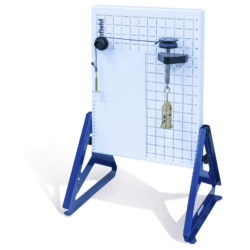
- Efficiency of a screw jack
- Efficiency of a wedge
- Efficiency of different bearings
- Mechanical advantage
- Velocity ratio
- Efficiency / ‘Overhaul’
EF-2.4 Potential and Kinetic Energy (Click to see more information)
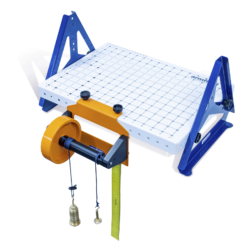
- Kinetic and potential energy in a pendulum
- Elastic (Potential) energy in a Spring
- Kinetic Energy in a Flywheel
- Energy Transfers
- Overcoming loses
EF-BU Base Unit (Click to see more information)
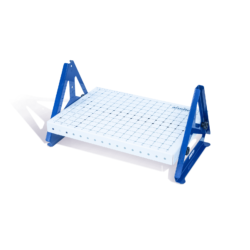
- Can be assembled in vertical (landscape and portrait), inclined and horizontal configurations (clear assembly instructions provided for each)
- Toolless assembly
- Base Unit backboard has a screen-printed grid reference which all assembly instructions refer to for the location of parts
- Screen-printed design also includes a measuring scale to help identify correct length thumb screws etc.
- Sturdy common base for all EF experiments to be assembled on
- Improve the students dexterity by self-assembly with graphical instructions provided
- Simple grid reference system to assist with assembly of experiments
- Flat-pack for easy storage
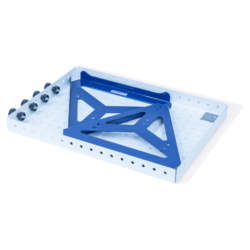
- EF-BU on which to build the experiment from the tray components
- Level and stable work surface to mount the EF-BU upon.
The optional EF-WS is ideal for this if no suitable desk or bench is available
TRAY DIMENTIONS
Length: 0.430m
Width: 0.312m
Height: 0.080m
EFK5 Vibration, Friction and Energy



